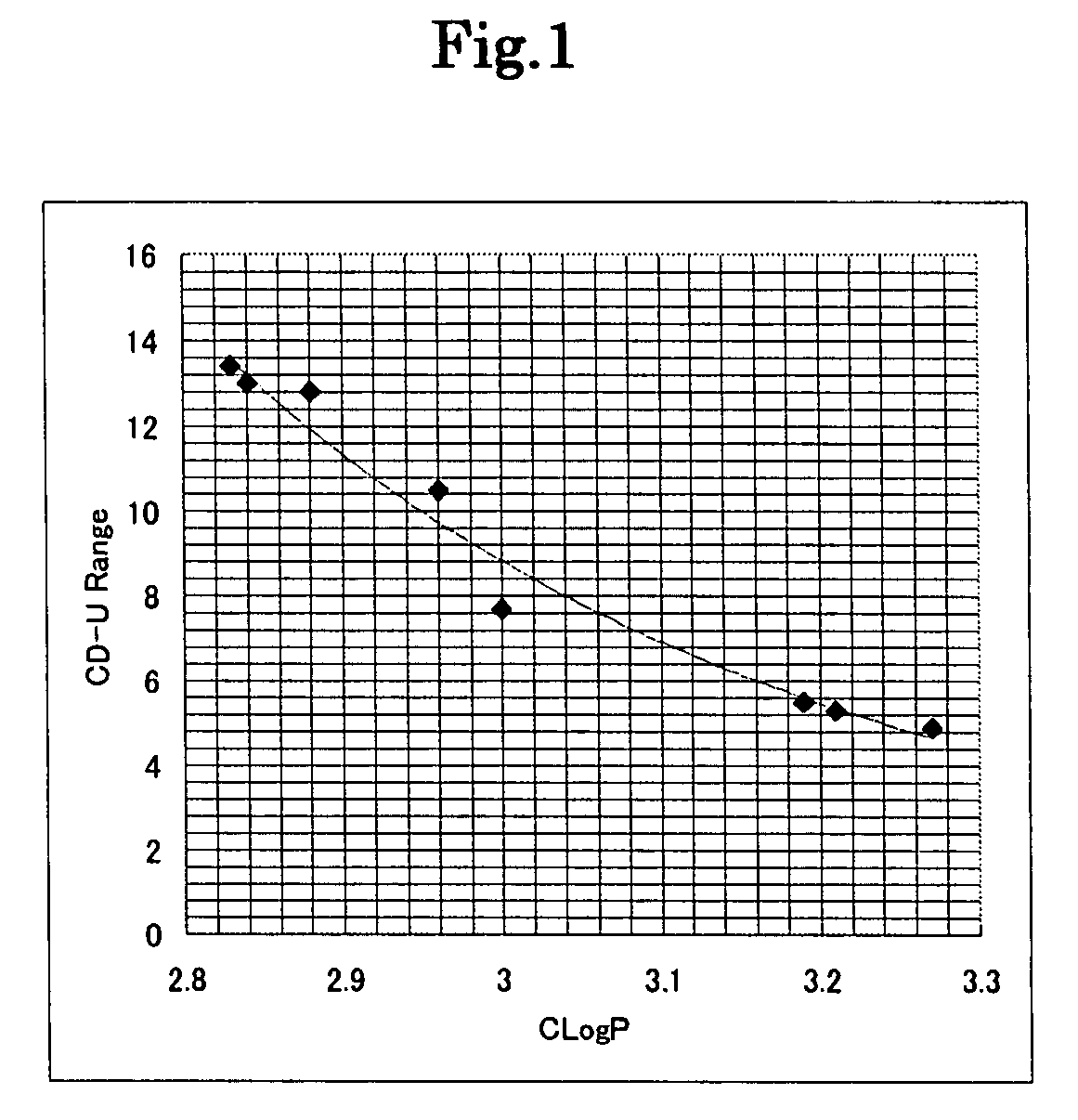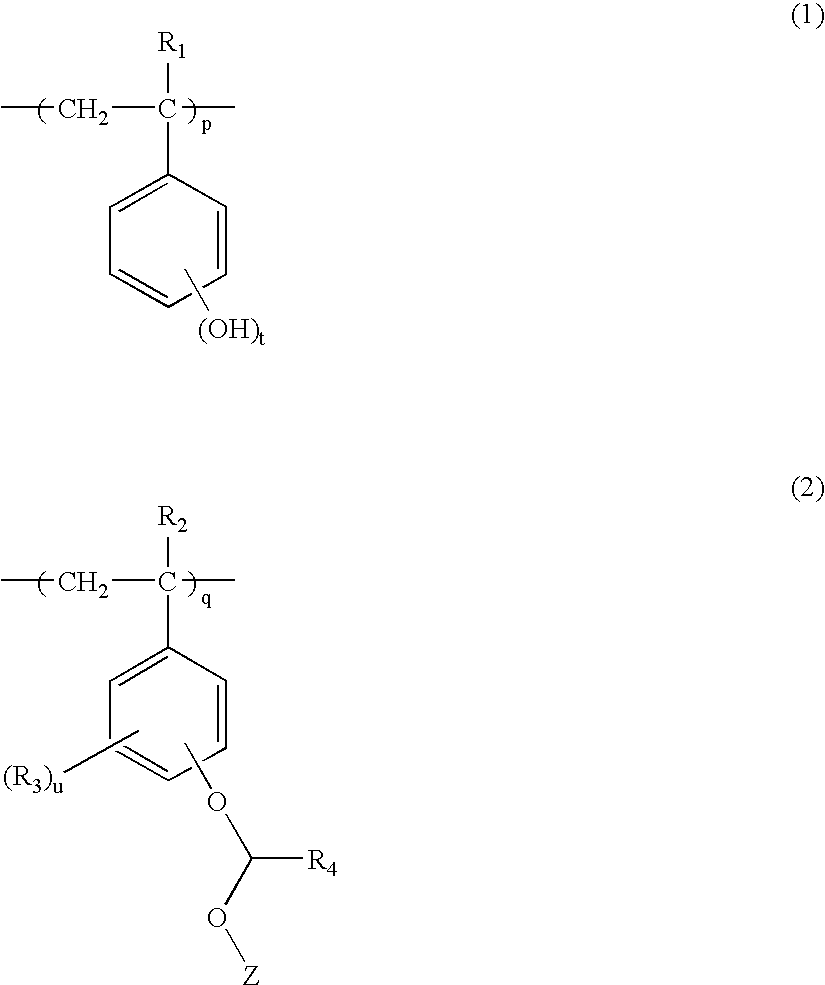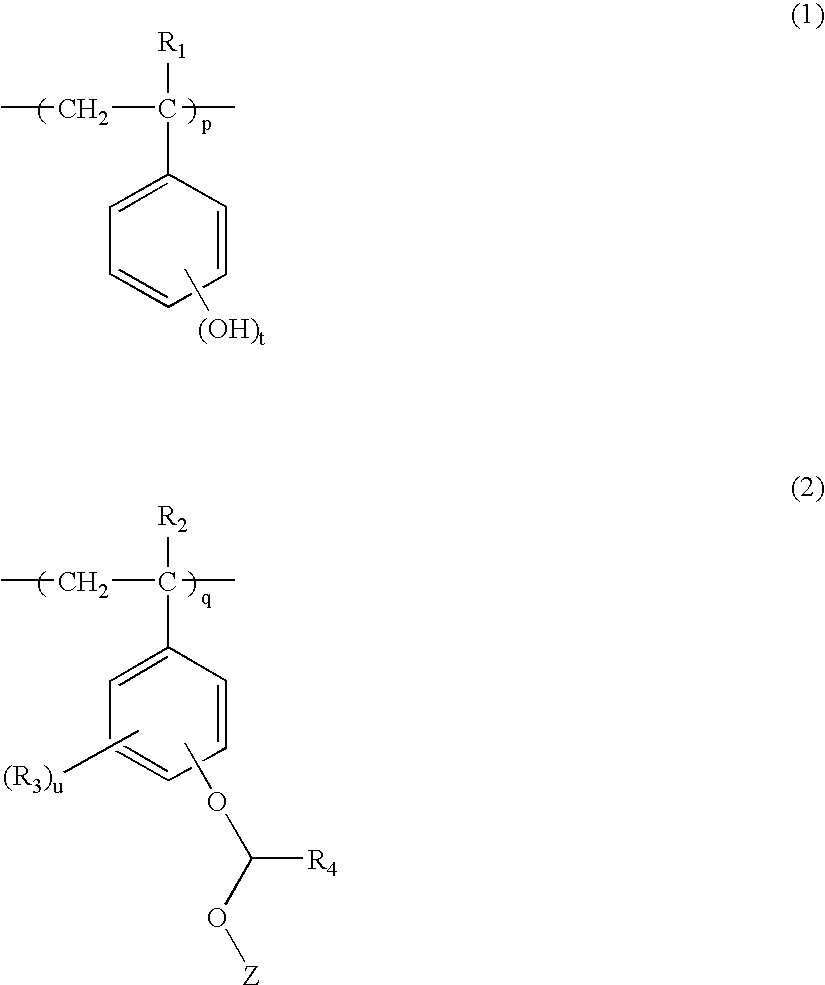Polymer, resist composition and patterning process using the same
a technology of resist composition and polymer, which is applied in the direction of photosensitive materials, instruments, photomechanical equipment, etc., can solve the problems of resist composition not being compatible with resist composition with thinner thickness, low resolution of resist composition, and large thickness of resist composition, etc., to achieve excellent etching resistance, good in-plane dimension uniformity of developed resist patterns, and high resolution
- Summary
- Abstract
- Description
- Claims
- Application Information
AI Technical Summary
Benefits of technology
Problems solved by technology
Method used
Image
Examples
synthetic example 1
[0154]In a 1 L flask, 280.7 g of acetoxy styrene, 119.3 g of indene, and 200 g of toluene as a solvent were placed. This reaction vessel was cooled to −70° C. under a nitrogen atmosphere, and subjected 3 times to degassing under reduced pressure and N2 flow. After the temperature was elevated to room temperature, 13.7 g of AIBN was added as a polymerization initiator, then the temperature was elevated to 50° C. and a reaction was conducted for 40 hours. This reaction solution was concentrated in half and precipitated in a 5.0 L solution of methanol. Thus obtained white solid was filtered and dried under reduced pressure at 40° C. to obtain 260 g of a white polymer. This polymer was dissolved again in 0.4 L of methanol and 0.5 L of tetrahydrofuran. Then 140 g of triethylamine and 30 g of water were added thereto and a deprotection reaction was conducted at an elevated temperature of 60° C. The reaction was quenched with acetic acid. The reaction solution was concentrated, and then di...
synthetic example 2
[0160]In a 1 L flask, 289.3 g of acetoxy styrene, 310.7 g of indene, and 500 g of toluene as a solvent were placed. This reaction vessel was cooled to −70° C. under a nitrogen atmosphere, and subjected 3 times to degassing under reduced pressure and N2 flow. After the temperature was elevated to room temperature, 14.6 g of AIBN was added as a polymerization initiator, then the temperature was elevated to 50° C. and a reaction was conducted for 40 hours. This reaction solution was concentrated in half and precipitated in a 5.0 L solution of methanol. Thus obtained white solid was filtered and dried under reduced pressure at 40° C. to obtain 260 g of a white polymer. This polymer was dissolved again in 0.4 L of methanol and 0.5 L of tetrahydrofuran. Then 140 g of triethylamine and 30 g of water were added thereto and a deprotection reaction was conducted at an elevated temperature of 60° C. The reaction was quenched with acetic acid. The reaction solution was concentrated, and then di...
synthetic example 3
[0166]In a 1 L flask, 271.7 g of acetoxy styrene, 28.3 g of acenaphthylene, and 300 g of toluene as a solvent were placed. This reaction vessel was cooled to −70° C. under a nitrogen atmosphere, and subjected 3 times to degassing under reduced pressure and N2 flow. After the temperature was elevated to room temperature, 17.9 g of AIBN was added as a polymerization initiator, then the temperature was elevated to 50° C. and a reaction was conducted for 40 hours. This reaction solution was concentrated in half and precipitated in a 5.0 L solution of methanol. Thus obtained white solid was filtered and dried under reduced pressure at 40° C. to obtain 282 g of a white polymer. This polymer was dissolved again in 0.4 L of methanol and 0.5 L of tetrahydrofuran. Then 140 g of triethylamine and 30 g of water were added thereto and a deprotection reaction was conducted at an elevated temperature of 60° C. The reaction was quenched with acetic acid. The reaction solution was concentrated, and ...
PUM
| Property | Measurement | Unit |
|---|---|---|
| temperature | aaaaa | aaaaa |
| molecular weight distribution | aaaaa | aaaaa |
| molecular weight distribution | aaaaa | aaaaa |
Abstract
Description
Claims
Application Information
 Login to View More
Login to View More - R&D
- Intellectual Property
- Life Sciences
- Materials
- Tech Scout
- Unparalleled Data Quality
- Higher Quality Content
- 60% Fewer Hallucinations
Browse by: Latest US Patents, China's latest patents, Technical Efficacy Thesaurus, Application Domain, Technology Topic, Popular Technical Reports.
© 2025 PatSnap. All rights reserved.Legal|Privacy policy|Modern Slavery Act Transparency Statement|Sitemap|About US| Contact US: help@patsnap.com



